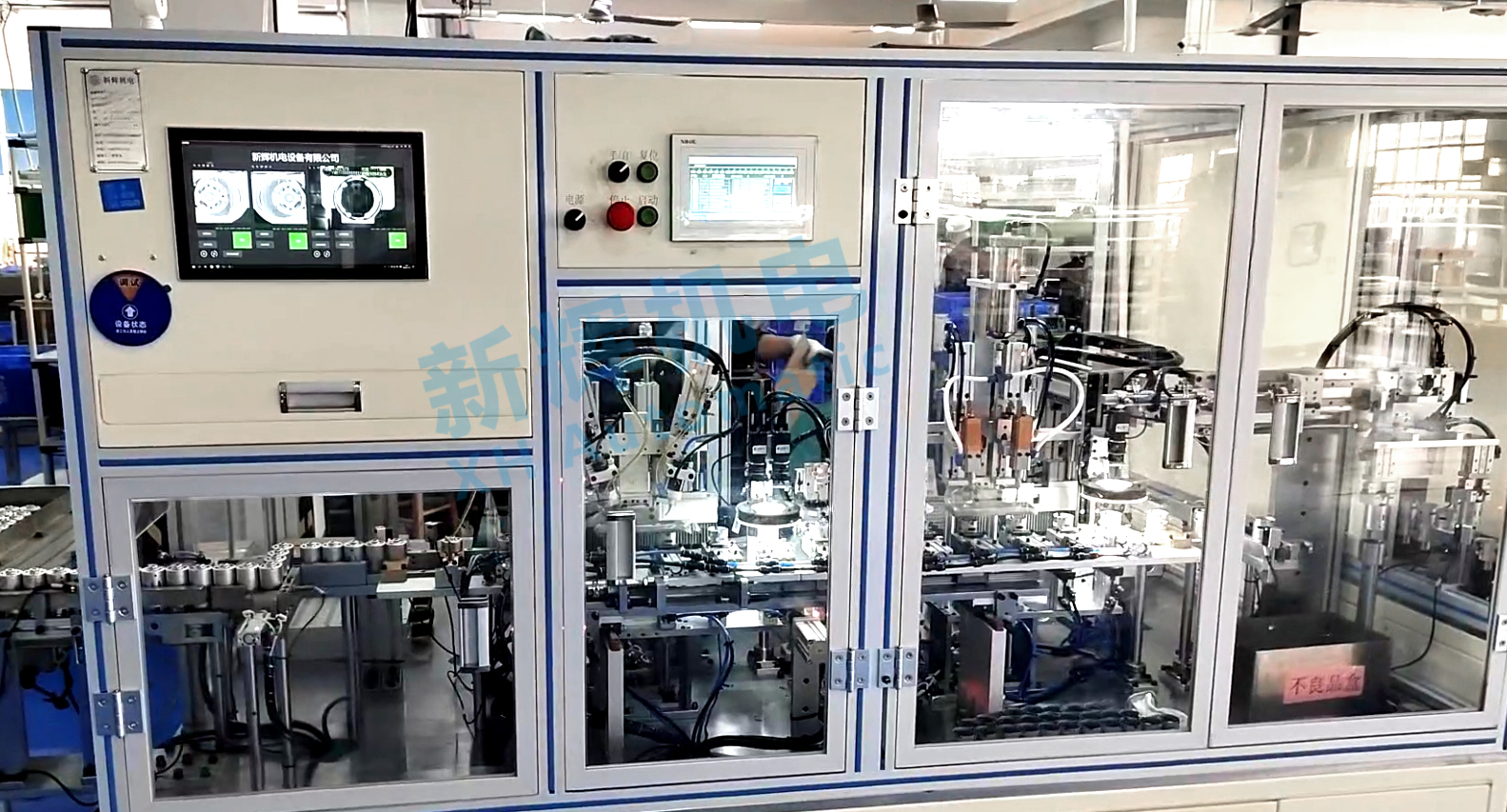What are the common sensor failures and their solutions for DC brushed motor motor automatic housing tile assembly machine?
The common sensor failures and their solutions for DC brushed motor motor automatic housing tile assembly machine are as follows:
1、Electrical connection failure
Failure phenomenon: the sensor signal can not be transmitted or the transmission is not stable, resulting in the equipment can not normally obtain the relevant data, which in turn affects the normal operation of the assembly machine, such as tile position sensor signal interruption, the assembly machine may not be able to accurately determine the position of the tile, resulting in the assembly of the wrong
Reason analysis: the sensor's connection line is loose, falling off, poor contact, or the line is aging, broken, resulting in increased resistance and signal attenuation.
Solution: Check the electrical connection lines of the sensor to ensure that the plug and socket are firmly connected, re-insertion and reinforcement of the loose connection parts; for aging, damaged lines, replace the new connection line.

2, zero drift fault
Failure phenomenon: sensors in the absence of input signals, the output signal value fluctuations or deviation from the zero point, so that the measurement results produce deviation, affecting the assembly accuracy, such as measuring the thickness of the magnetic tile sensor zero drift, may lead to the assembly to choose the wrong size of the magnetic tile
Cause analysis: temperature, humidity changes, power supply voltage fluctuations, as well as the aging of the internal components of the sensor and other factors, may lead to zero drift
Solution: zero calibration of the sensor, in accordance with the sensor calibration procedures, under the specified environmental conditions, the use of standard calibration equipment to adjust the zero point of the sensor; at the same time, stabilize the sensor's operating environment, control temperature, humidity and supply voltage fluctuations in the range.
3, sensitivity reduction fault
Failure phenomenon: the sensor's response to the input signal becomes weaker, the output signal amplitude becomes smaller, unable to accurately detect the weak physical changes, such as magnetic tile in place to detect the reduced sensitivity of the sensor, may not be able to detect in time to see whether the tile is accurately in place, thus affecting the efficiency and quality of the assembly
Reason analysis: after long-term use of the sensor, the internal component performance degradation, dust accumulation, wear and tear of mechanical parts, etc., may lead to reduced sensitivity
Solution: Clean the sensor surface and internal dust and debris to prevent it from affecting the performance of the sensor; for serious wear and tear of mechanical parts or performance degradation of components, timely replacement; if the sensor can be adjusted sensitivity, according to the actual situation of the sensitivity parameters can be adjusted appropriately.
4, overload damage failure
Failure phenomenon: the sensor is beyond the measurement range of the input signal impact, resulting in damage to the internal components, can not work properly, such as in the assembly process, if the magnetic tile impact is too large, may make the force sensor overload damage!
Reason analysis: abnormal conditions occur during the operation of the equipment, such as mechanical parts collision, external impact, resulting in the sensor to withstand excessive physical quantity 12.
Solution: add overload protection devices for the sensor, such as current limiters, voltage limiters, etc., when the input signal exceeds the sensor's measurement range, the protection device automatically cut off the signal to prevent sensor damage; at the same time, optimize the operation process of the equipment, to avoid the emergence of abnormal impact force and overload conditions.
5, signal interference fault
Failure phenomenon: the sensor signal is subject to external electromagnetic interference, distortion, fluctuations and other phenomena, so that the control system receives the wrong signal, resulting in the assembly machine to make the wrong action, such as the start of the nearby large motor, may be the position of the assembly machine sensor electromagnetic interference
Reason analysis: There are strong electromagnetic field sources around the equipment, such as large motors, transformers, high-frequency equipment, etc., and the electromagnetic waves generated by them will interfere with the transmission of sensor signals.
Solution: the sensor signal line to take shielding measures, such as the use of shielded cables, and ensure that the shielding layer is well grounded; the sensor away from the source of electromagnetic interference, or the source of the interference to take shielding, filtering and other measures to reduce its electromagnetic interference to the outside world; in the signal processing circuit to increase the filtering circuit, filtering out the interfering signals, to improve the stability and reliability of the signal.
※ If the above ways and means still can not solve the equipment failure, please contact Xinhui Electromechanical Equipment Co., Ltd. through the page chat tool to seek help.







